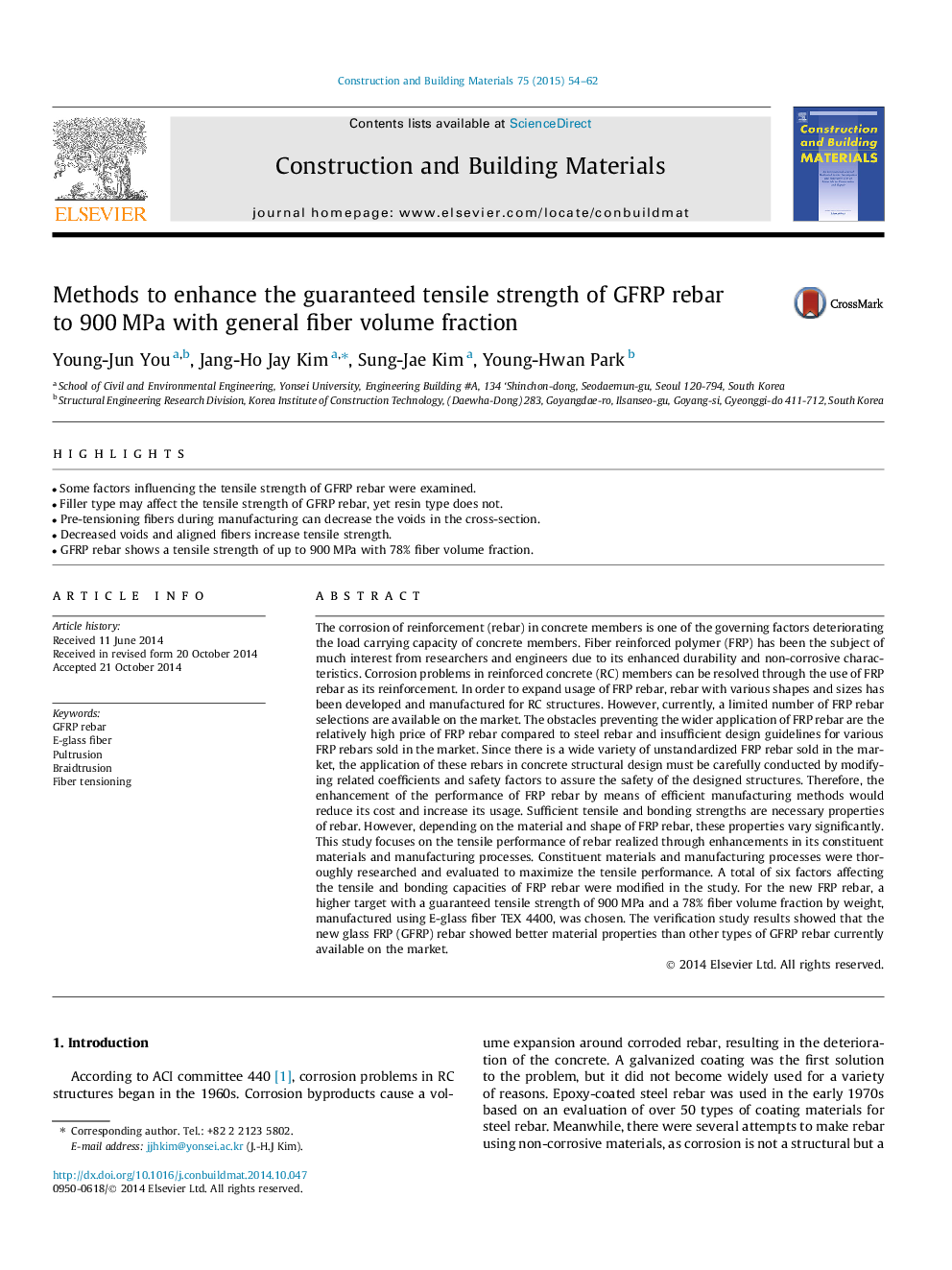| Article ID | Journal | Published Year | Pages | File Type |
|---|---|---|---|---|
| 6721493 | Construction and Building Materials | 2015 | 9 Pages |
Abstract
The corrosion of reinforcement (rebar) in concrete members is one of the governing factors deteriorating the load carrying capacity of concrete members. Fiber reinforced polymer (FRP) has been the subject of much interest from researchers and engineers due to its enhanced durability and non-corrosive characteristics. Corrosion problems in reinforced concrete (RC) members can be resolved through the use of FRP rebar as its reinforcement. In order to expand usage of FRP rebar, rebar with various shapes and sizes has been developed and manufactured for RC structures. However, currently, a limited number of FRP rebar selections are available on the market. The obstacles preventing the wider application of FRP rebar are the relatively high price of FRP rebar compared to steel rebar and insufficient design guidelines for various FRP rebars sold in the market. Since there is a wide variety of unstandardized FRP rebar sold in the market, the application of these rebars in concrete structural design must be carefully conducted by modifying related coefficients and safety factors to assure the safety of the designed structures. Therefore, the enhancement of the performance of FRP rebar by means of efficient manufacturing methods would reduce its cost and increase its usage. Sufficient tensile and bonding strengths are necessary properties of rebar. However, depending on the material and shape of FRP rebar, these properties vary significantly. This study focuses on the tensile performance of rebar realized through enhancements in its constituent materials and manufacturing processes. Constituent materials and manufacturing processes were thoroughly researched and evaluated to maximize the tensile performance. A total of six factors affecting the tensile and bonding capacities of FRP rebar were modified in the study. For the new FRP rebar, a higher target with a guaranteed tensile strength of 900Â MPa and a 78% fiber volume fraction by weight, manufactured using E-glass fiber TEX 4400, was chosen. The verification study results showed that the new glass FRP (GFRP) rebar showed better material properties than other types of GFRP rebar currently available on the market.
Keywords
Related Topics
Physical Sciences and Engineering
Engineering
Civil and Structural Engineering
Authors
Young-Jun You, Jang-Ho Jay Kim, Sung-Jae Kim, Young-Hwan Park,
